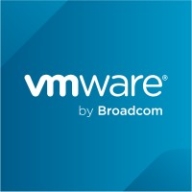

VMWare Tanzu CloudHealth and Spot compete in cloud management solutions. While Tanzu CloudHealth has a robust feature set, Spot optimizes costs, giving it an edge in cost savings.
Features: VMWare Tanzu CloudHealth provides cloud analytics, policy-driven automation, and cost management tools. Spot focuses on predictive scaling, workload intelligence, and continuous cloud resource optimization.
Ease of Deployment and Customer Service: VMWare Tanzu CloudHealth has an intricate deployment model requiring more setup, while Spot offers a streamlined deployment with easy integration. Spot is noted for quick customer service responses.
Pricing and ROI: VMWare Tanzu CloudHealth typically incurs higher initial costs but offers high ROI over time. Spot offers affordable initial setup with high ROI for cost-prioritizing organizations.
| Product | Market Share (%) |
|---|---|
| VMWare Tanzu CloudHealth | 1.9% |
| Spot | 1.1% |
| Other | 97.0% |


| Company Size | Count |
|---|---|
| Small Business | 4 |
| Midsize Enterprise | 2 |
| Large Enterprise | 4 |
Spot provides dynamic workload management for cloud environments, offering cost optimization and enhanced performance. It stands out with its unique approach to managing resources efficiently.
Spot is designed to enhance cloud resource utilization and cost-effectiveness through intelligent workload management. With real-time analysis, Spot determines and deploys the most efficient resources, ensuring optimal performance for applications. Businesses benefit from reduced cloud expenses and increased operational efficiency, making it an essential tool for managing cloud infrastructure effectively.
What are the key features of Spot?In finance, Spot ensures cost-effective cloud computing for trading platforms, while in e-commerce, it dynamically manages back-end processes. In the entertainment industry, Spot optimizes media streaming by deploying resources when user demand spikes. Each industry leverages Spot to maximize performance and minimize operational costs, demonstrating its versatility and reliability across sectors.
VMware Tanzu CloudHealth, formerly known as VMware Aria Cost Powered by CloudHealth, is a specialized cloud management platform tailored for Multi-Cloud Cost Optimization. It offers comprehensive visibility into cloud spending across various providers, enabling users to identify areas for optimization and make informed resource allocation decisions. With features like reserved instance management, resource rightsizing, and automated cost governance policies, it facilitates financial management for optimal cost efficiency. Beyond cost optimization, Tanzu CloudHealth enhances cloud operations through workload optimization and governance automation, catering to multi-cloud environments encompassing public, private, and hybrid clouds. Its primary focus remains on enabling organizations to effectively manage and reduce cloud expenditures while supporting operations across diverse cloud platforms.
We monitor all Cloud Management reviews to prevent fraudulent reviews and keep review quality high. We do not post reviews by company employees or direct competitors. We validate each review for authenticity via cross-reference with LinkedIn, and personal follow-up with the reviewer when necessary.